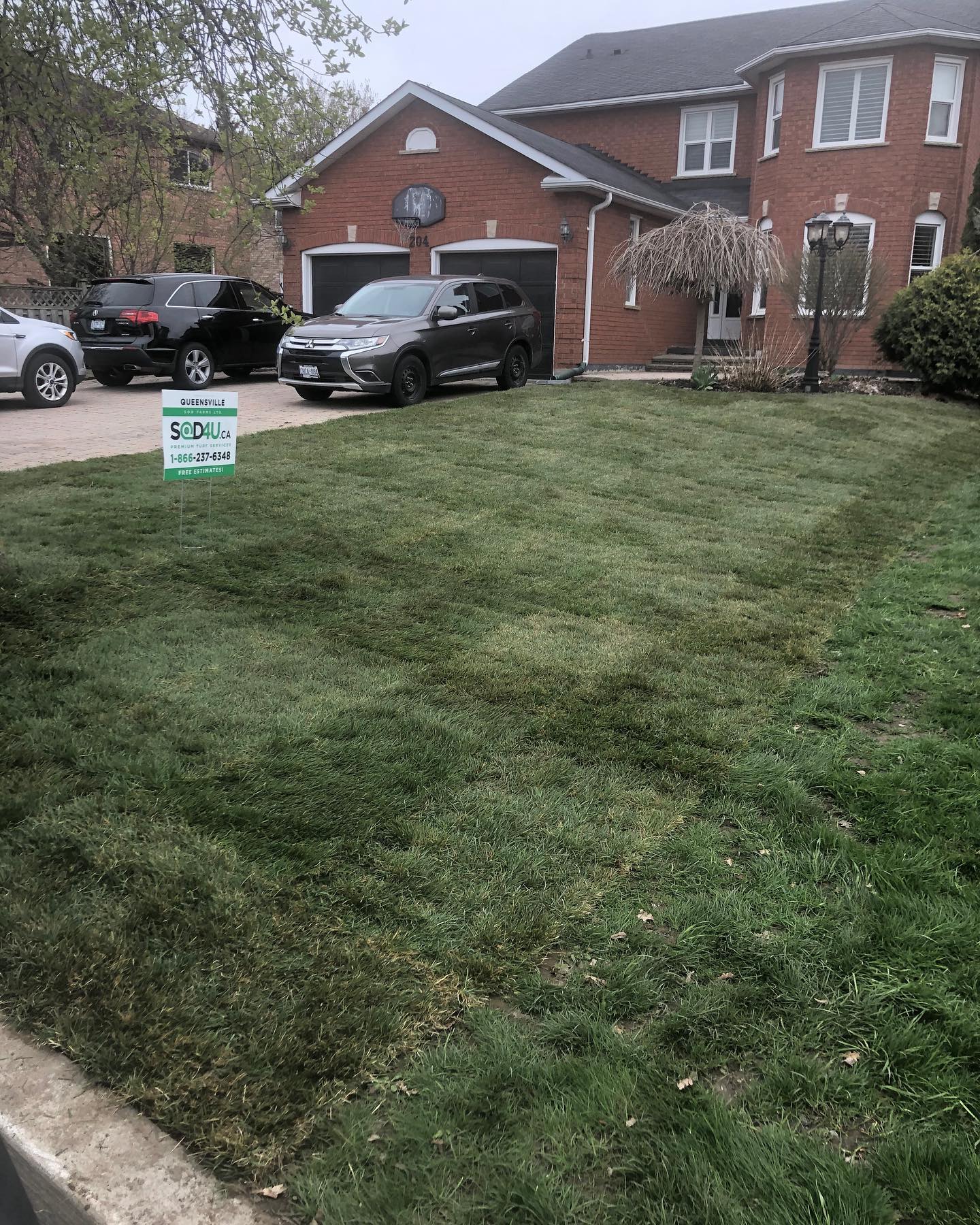Thinking about how the grass could be greener? Have you gotten a new yard space that needs some lovely sod? Maybe your lawn could use a full refresh. Either way, the best way to get an immediately beautiful lawn is laying sod. Sod is already grown, so the moment it’s added to your lawn, your yard is sure to impress. Naturally, you want your lawn to look its best, so you’ll want to lay the sod perfectly. We’ve been growing and installing sod for over 80 years, so we’ll lend some of our expertise to provide you with the when and how for laying the perfect sod.
When to Lay the Perfect Sod
You can lay down sod throughout most of the year except when there is a layer of snow on the ground. Even though grass goes dormant during the winter, you can still lay sod at this time. It won’t take root, but will patiently wait, revive, and root when spring arrives. Grass grows throughout the rest of the year, and you can lay sod anytime in the spring, summer, and fall. If you are laying sod in late autumn or winter, be careful not to lay sod on any steep slopes. Since the sod won’t root until spring, it won’t fix itself into the ground and will be at risk of falling. Some of the best sod catches can happen at the end of the year.
While any part of the growing season will do, certain times are more ideal. Queensville Sod uses lush Kentucky bluegrass for our sod, which is a cool-season grass species that can tolerate Ontario winters. Canadian homes should only use cold-season sod. While a warm-season sod may fare better against Ontario’s summer sun, they quickly lose a serious battle when the snow starts to fall. As a cool-season sod, Kentucky Bluegrass also grows best in cooler seasons. Therefore, the best time to lay sod is at the start of spring or fall, when temperatures are cooler and there is still ample time for the sod to take root.
How to Lay the Perfect Sod
Unfortunately, laying the perfect sod is not just putting the rolls on your lawn. Laying sod demands a degree of care and attention to detail. You need to provide the appropriate preparation and lay the sod carefully for that beautiful yard.
How to Prepare for Perfect Sod
There are few critical steps of preparation you should finish before laying your sod. The first is to determine the size of the area where you are laying sod. The most precise way is to use a measuring wheel. We don’t recommend roughly measuring with your step length. Counting the number of steps needed to cross the area and multiplying that number by your step’s distance will only provide a rough estimate, and you may buy too much or, worse, too little sod. Instead, we recommend using our handy sod calculator at the bottom of each product page to determine how much sod you will need. Be sure to minus any areas that won’t need sod such as gardens, walkways, or trees.
Once you know how much sod you’ll need, you will need to prepare the soil in the area. Sod can’t be put on old growth, so all grass and weeds need to be removed to create a flat bed of fresh dirt. Vinegar is a great, natural and non-toxic herbicide. Then place some tarps on the soil and leave it for a few weeks. This will prevent new growth from starting. Afterward, till garden soil or compost into the lawn. This does two things. It loosens the dirt so that the sod can more quickly settle its roots into the deeper soil and adds nutrients for the new sod. Lastly, rake the lawn to ensure positive drainage is away from your home. This is also a good time to check your soil's pH level and add fertilizer to provide the perfect bed for laying sod.
Laying the Perfect Sod
The yard is ready. It’s time for installing the sod. Laying is a delicate process and should be done with care. For the best results, we recommend that you let our expert team install your sod to ensure it truly ends up perfect.
If you are willing and have the skill to lay the sod yourself, here are a few tips:
- Only order sod once you are prepared for it.
- Sod comes in fresh rolls that should be stored out of the sun until it is laid down.
- Lay sod within 6 hours of being delivered.
- Dampen the rolls so they unroll more easily. The rolls can dry while stored and become stiff.
- Lay the sod staggered rather than flush to prevent lines.
- Use a roller or pat the sod with a shovel to remove wrinkles or gaps between the sod and soil.
- Water it immediately and daily for the first two weeks. New sod has shallow roots and needs regular watering.
The Perfect Sod for the Perfect Yard
Now you know the when and how of laying the perfect sod, and you will soon have a perfect yard. If you want more information on how to measure your yard, prepare the area for sod, or want to entrust it to a team with decades of sod installation behind them, then contact us at Queensville Sod.





